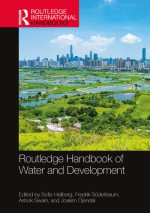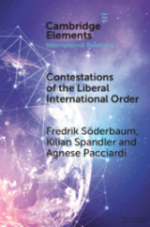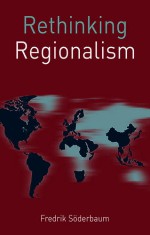Special Issue on the Integration of Regions

The prestigious Georgetown Journal of International Relations just published a special issue on Regionalism. It contains a number of case studies and two theoretical pieces, one written by Luk Van Langenhove, Director UNU-CRIS, the other piece by Fredrik Söderbaum, UNU-CRIS Associate Research Fellow.
Piero S. Graglia writes in his introduction the following:
"like many other European colleagues, I grew up professionally and culturally within that parochialism that is the subject of Söderbaum’s complaint. Too often scholars of the European integration process have regarded the European experience as a universal point of arrival. This is an attitude very similar to that of the theorists of the centrality of the Nation-State in the nineteenth century. The Nation-State was then considered the point of arrival of every significant social and institutional experience. Similarly, in a sense, the process of European integration has erroneously become the benchmark of any other process of integration, even when a comparison is hardly possible.
The solution proposed by Söderbaum – to increase comparative studies of different regional integration experiences – is an interesting point of discussion. However, the question arises whether there are enough instruments, tools, and sensibilities to make sense and to give meaning to such comparisons. To compare means to examine similar objects, or at least things belonging to the same order, or species. I do not think it can be considered parochialism to sustain that a European exceptionalism exists in the field of regional integration, similarly to an American exceptionalism in the field of International Relations. There exists no other example of regional integration that spans from the sectorial beginning of economic integration (the European Steel and Coal Community in 1950-1952) to the pre-federal result of the common currency and the creation of a central bank not controlled by any national power. It is a situation that is, perhaps, at the base of the present crisis of credibility for the future of the Union, but one that certainly needs to evolve into “something” different in both the institutional and political domain. Whether this evolution goes in the direction of further deepening or pulling back the level of integration is an open-ended question. In the meanwhile, I think that if it is pretentious to force the rest of the regional integration phenomena to observe the rules and to conform to the EU characteristics, an alternate subtle kind of parochialism would be to sustain that the EU is a typical kind of regional integration similar to those that are analyzed in this issue.
This problem is the subject, in some ways, of Luk Van Langenhove’s article, The Unity and Diversity in Regional Integration Studies and is, in some ways, complementary to Söderbaum’s piece. These are two contributions that I will likely use next September for my first year students in my courses on the History of European Integration to fight the cultural and academic tendency to affirm the European teleology of the “victorious future” of the European Union. Van Langenhove’s view regarding the “social construction” of regional integration helps to go beyond the idea of regional integration based solely upon intergovernmental initiatives and will. Such a view can help overcome any constraints imposed by sectorial studies and enrich the study of how political movements, intellectual elites, political and social forces, and trade unions, promote – or hinder – regional integration processes. These two contributions prepare the reader for the subsequent essays that are centered on regional integration case studies of great interest."
Other books by these authors
Featured Books
No featured books





